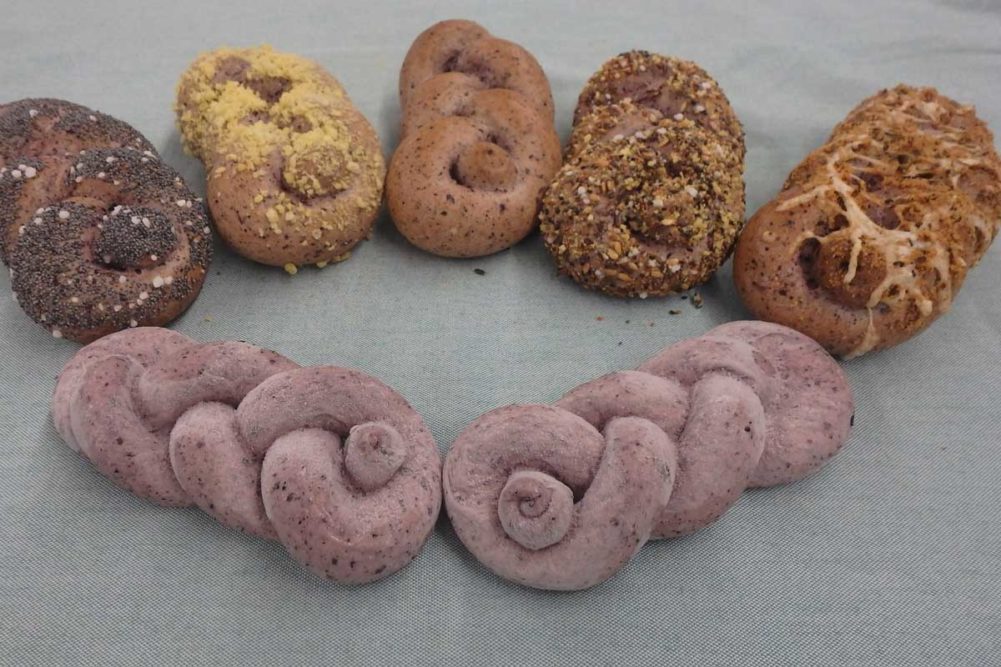Automation has replaced many manual tasks in soft pretzel production. Today’s bakers can add robotic pretzel tying machines, automated scoring and scarification units, and automatic caustic application systems to their lines.
And as soft pretzel products become more popular, new twists on the standard shapes are taking form.
Fritsch’s automatic twisters can crank out more than 2,000 pieces an hour, said Matt Zielsdorf, director of bakery sales for Fritsch, a Multivac company. By adding multiple inline moulding systems, robotic twisters and panning systems to a line, pretzel makers can boost production to as many as 8,000 pieces an hour. This can help if the ropes need complex twists.
“The more twists and the larger the product size typically means fewer products per hour,” Mr. Zielsdorf said. “The more intricate the twisted product is, the longer each product is stopped while the robot does its job to twist/tie it.”
To increase consistency, Fritsch lines are set up with vision systems to reject any dough noodle that is out of spec — too short, long, fat, skinny or oddly shaped — prior to twisting.
WP Riehle’s twisting robots create pretzels, pretzel sticks, pretzel bread rolls and pretzel baguettes with different twist patterns. Its 3D camera system can also recognize dough pieces no matter their orientation on a transport belt, said Franz Jordan, managing director, WP Riehle.
Advances in scarification have also revolutionized what a pretzel can look like.
“Different cutting patterns can be stored with corresponding programs so the robot scores automatically when the program is selected,” Mr. Jordan said. “We use ultrasonic or rotating knifes. No staff or manual working step is needed.”
[Related reading: Ditsch USA captures the spirit of Bavarian pretzel making]
ABI LTD vision systems and robotics have enabled one system, via a change of end of arm tooling, to do straight plunge cuts, straight angular cuts, compound angular cuts or drag blade cuts, all with or without ultrasonic blades.
“We can now follow a curve and adjust the depth based on vision system recognition,” said Alex Kuperman, chief executive officer, ABI. “We can even build in randomization to allow for a more artisan appearance.”
Another popular innovation is filled pretzels.
“Consumers seem to really enjoy the texture and taste of pretzel dough, and it lends itself to be filled with so many different fillings,” said John Giacoio, vice president of sales, Rheon USA. “We have seen pizza-filled pretzels, cheese-filled pretzels and even a crab and horseradish-filled pretzel, just to name a few.”
For these products, moisture content is the most important consideration. Any blowouts or leaks of a filled product as it is baked creates a huge mess and can shut down a line.
“While moisture content and dough consistency are largely formulating issues, a coextruder can help pretzel producers manage production and provide accurately filled products, consistent dough flow and proper sealing,” Mr. Giacoio said.
Rheon coextruders can inject 10 to 300 grams of filling per piece as long as the dough has the extensibility to handle the amount and type of filling. After makeup and dividing, pretzel dough, filled or not, faces one of its trickiest hurdles yet.
This article is an excerpt from the July 2020 issue of Baking & Snack. To read the entire feature on pretzel technology, click here.






